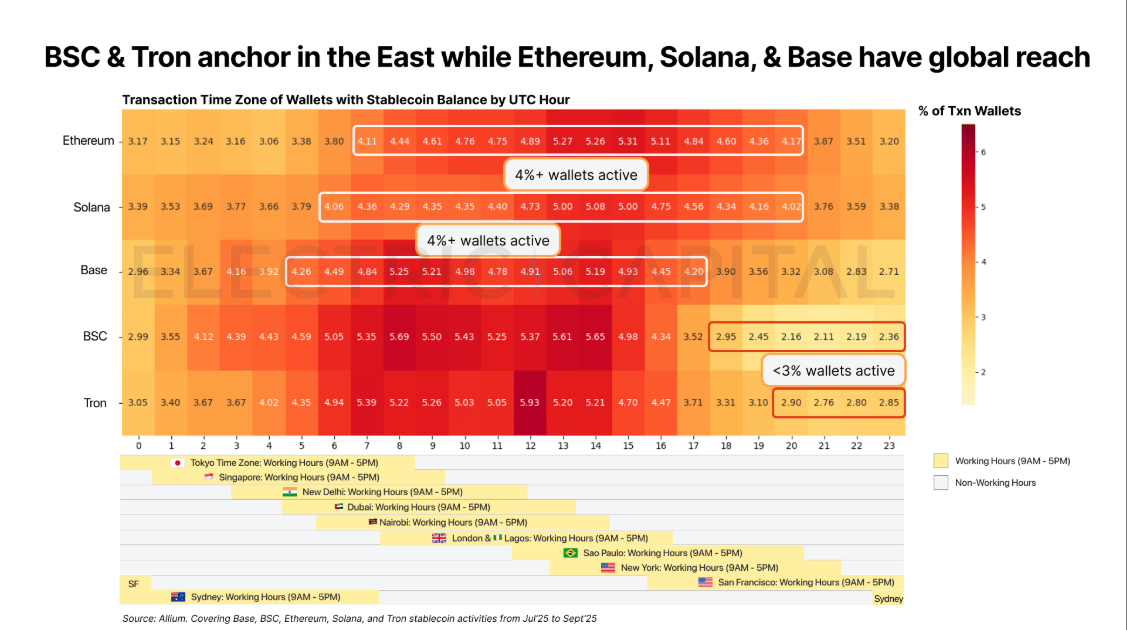A recent study by Electric Capital revealed that although stablecoin usage is global, the Americas leads in stablecoin activity compared to more populated regions.
Wallet size and user activity patterns
Although stablecoin usage is global, the Americas generates more stablecoin activity than even more populated regions, according to a new study by Electric Capital. The report highlights that large wallets holding more than $100,000 tend to be active during business hours across Asia, the Middle East, Europe and the US East Coast. This pattern suggests institutional or professional users operating in major financial centers.
In contrast, smaller wallets under $100 exhibit a more globally dispersed pattern of activity, with daily users making transactions in different regions throughout the day.

Regarding blockchain networks in use, our findings show that Ethereum and Solana have balanced usage globally, but with high activity during work hours in both the Eastern Hemisphere (EST 2-6) and Western Hemisphere (EST 8-11). However, Tron and BSC, which handle a large share of USDT transactions, are more concentrated in Asia, the Middle East, and Africa.
“BSC and TRON show very similar patterns, with activity concentrated between 6 and 15 UTC, which is consistent with working hours in Asia, the Middle East, and Europe. Both chains have less than 3% of their activity in the US time zone, indicating relatively minimal adoption in Western Europe despite their large overall user bases,” the report notes.
In contrast, Base is geographically diverse, with significant activity across multiple time zones.

An analysis of chain-by-chain activity reveals that Ethereum maintains a globally distributed user base, but is more heavily used in the Western region compared to its population share. Solana revealed a geographic divide. Large wallets are concentrated in the Americas, while smaller wallets are scattered around the world.
The base shows the most pronounced geographic disparity, with smaller wallets biased towards the east and larger wallets towards the west. Meanwhile, BSC remains rooted in the Eastern Hemisphere, with limited US activity, and TRON shows even stronger regional concentration, especially among large wallets.
Frequently asked questions 💡
- Where is the most stablecoin activity? The Americas leads in stablecoin usage despite its small population size.
- When are large wallets most active? Large wallets are traded during business hours in Asia, the Middle East, Europe and the US East Coast.
- Which chains exhibit regional concentration? Tron and BSC are heavily used in Asia, the Middle East, and Africa, but have minimal activity in the United States.
- How does wallet size affect geographic usage? Small wallets are distributed around the world, while large wallets exhibit regional clustering by chain.

